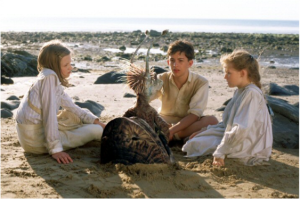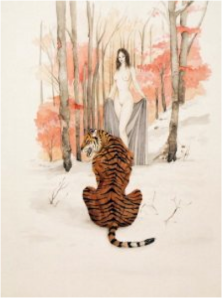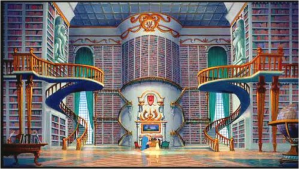The first of today’s guest entries from Rebekah Fitzsimmons’s “Golden Age of Children’s Literature” course comes from Christina Paik, who gives us a little insight into some very familiar personalities.
By Christina Paik
In the children’s classic The World of Winnie-the-Pooh, A.A. Milne created a vast array of characters based directly off his own son’s childhood toys. These toys take on their own characteristic traits in the story that differ from previous works that we’ve read.
Each of the toys, which are animals in Hundred Acre Wood, have personalities that are extremely centered on one direct trait. A study published by the Canadian Medical Journal took these characters and analyzed them according to standards in the DSM-IV and noted that their personalities could notably relate to mental disorders.
According to DSM-IV criteria by this study, Christopher Robin could be considered schizophrenic because he imagines that his childhood toys are living and can talk. Pooh bear has an eating disorder and obessed with honey, which has led to obesity. Piglet has anxiety, which is demonstrated in his fear of everything. Eeyore has depression and Tigger has ADHD. Owl is dyslexic. These are all very interesting connections that individuals have made about this story.
Whether it’s fictional or factual, such connections made about this story only show that the story of Winnie-the-Pooh have endured the test of time and become an interest to the minds of both children and adults. People have been influenced by these characters because of their ability to relate to real human traits. Unlike the perfect children of Five Children and It, the egotism of Owl and the impulsiveness of Roo and Tigger are all characteristics that children show in their everyday lives. When these children grow and become adults, they remember how they related to certain characters in this story and still feel a sense of nostalgia that sometimes appears in collections of Winnie-the-Pooh paraphernalia or tattoos.
This makes The World of Winnie-the-Pooh not only a part of the classical editions to children’s literature, but also a part of the sentimental canon. Its story and all of its adaptations still continue to be relevant today. As for the “mental disorders” shown by the characters of this story, we can only guess whether or not these statements are true. However, the truth is that Winnie-the-Pooh is a character loved by many even today.
Christina is an undergraduate at the University of Florida.













